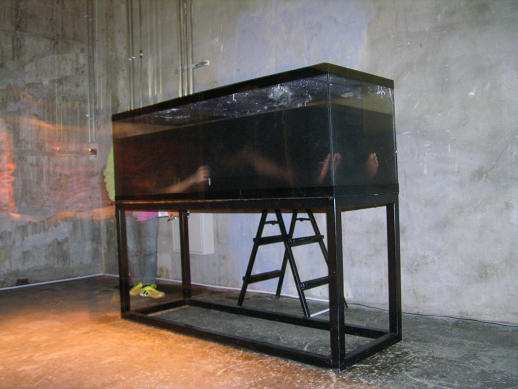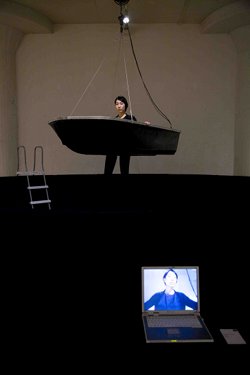Class of Post-3.11
Graduation is an occasion with mixed feelings — a sentimental event that makes one realize the passage of time, but also marking the completion of a long period of effort and a step towards the future. With the Japanese school year beginning in April, January and February are the busiest months for graduating students. Although most students submit a written dissertation, soon forgotten as he or she enters the workforce, in the case of art students, their graduation exhibition is a pretty big deal. These exhibitions, usually organized by and held on university grounds, are not only for students’ personal sense of satisfaction and accomplishment but they serve as scouting grounds for gallerists looking for future talent.
There have been several graduation exhibitions being held around Tokyo, some of which have already ended. One organized by the Department of Inter Media Art in Tokyo Art University was held at BankART Studio NYK from January 7 to 15. As the department supposedly focuses on the relationship between art and society, the exhibition explained it self as “the answer the students gave towards the Japanese situation after 3/11”. The show might have been organized under that slogan but its actual content was less uniform. Some did address Fukushima or the earthquake, but many others were more concerned with their individual aesthetic inquiries. All three floors of BankART were occupied with photographs, paintings, drawings, and installations, as well as scheduled performances and talk shows.

To introduce several from the exhibited works:
Kaya Hanasaki, a graduating MA student, did a performance where she hung herself from the ceiling on a boat. The little boat had holes cut out for her legs to dangle out, successfully transforming the performer into a boat/woman. Suspended above the spectators’ heads, both boat and man were made into a symbol of impotence, placed outside their usual context, lost in mid-air. Titling it ‘Row Your Boat’, Hanasaki explains that she drew upon the relationship between people and the changing social currents, and how social upheaval potentially estranges people from known reality. Thrown into the midst of unpredictable circumstances, each individual becomes a little boat on a stormy sea, trying to stay afloat, tossed around by wind, current, and unexpected waves.
While Hanasaki’s performance concentrated on the fragility of man, Toma Seki, another MA student, focused on its potential strength. With a prolonged interest in energy, his earlier works were concerned with natural energy such as sunlight. In this performance however, Seki concentrated on innate human power expressed in the form of breathing: the artist submerged himself in inked water while breathing through a white tube. Breathing is one of the fundamental activities that keep us alive, but it is an activity done unconsciously and none of us take heed of it in daily life. Seki, by erasing his visual physicality, visualized his breath as the essence of life and power behind human activity. It, in connection with certain accepted safeties before the quake about things like drinking water and food products, highlights how the most important aspects of life goes unnoticed.

In addition to the students’ artworks there were also talk events. On the last day of the exhibition, a panel session was held under the theme “10 months after 3.11” with guest speakers Yoshihide Otomo, Illcomonz, Tadasu Takamine, Kazuhiko Hachiya, Risaku Suzuki, Fuyuki Yamakawa, and Noboru Takayama. As artists who have created projects or artworks related to the quake and Fukushima, they were asked to explain their activities and their future plans, as well as answer prepared questions submitted by art students. Usually, guest talks have little potential for real debate and end by reconfirming some uniform agreement amongst its participants. However, this session was interesting in that there were some visible rifts and disagreements. For example, on the question of whether words or speech can change society, some were supportive of the role of language while others disagreed. Although this may have been unintended by the organizers, the talk illuminated the absence of one clear answer or mutuality, even among those who have found inspiration in Fukushima or the quake. As many of the questions directed to the guests were concerned with the ‘correct way’ to deal with the disaster, the session potentially provided good food for thought for those in search of pre-prepared, clear-cut solutions.
Overall, the Department of Inter Media Art did not provide an ‘answer’ to the quake or Fukushima; rather, it successfully portrayed the ambiguity, hopes, and fears felt by the Japanese people. This, of course, is the answer: that there is none, and that we have to keep thinking.
Other upcoming graduation exhibitions are as follows: Tokyo University of Arts January 29 to February 3, Tama Art University Department of Design Feb 8 to 12, Yokohama Art University February 23 to 26, Tokyo Zokei University Department of Graphic Design March 3 to 4, Joshi Art University March 11 to 14.
Chisako Izuhara
Chisako Izuhara



